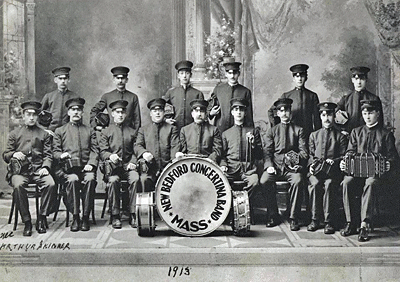The concertina is considered a free-reed instrument because the unattached ends of the reeds (small metal tongues) vibrate freely. With an English concertina, I get the same note on the “push” or “pull” of the bellows. Working on the same principle as a harmonica, the Anglo concertina gives a different note with the “push” or “pull.” With fewer keys (and thus less expensive too), the Anglo concertina became especially popular to accompany English Morris dances, performed traditionally only by men to ensure crop growth. It was quite effective for Morris dancing because its volume is greater than that of the fiddle, pipe (whistle) or tabor (drum).
While the Anglos concertina provides a nice rhythmic and lilting effect for dance music, I’m very happy playing the English style and not having to think about whether to “push” or “pull” my bellows for a certain note. I’ve found it very suitable and fun for the jig, reel, hornpipe, mazurka, strathspey, polka, march and waltz. It’s also great for accompanying sea chanteys, folk ballads and Irish pub songs. Someday I’d like to learn more Latin, jazz or classical music on it. I’ve even heard the instrument in some pop recordings from the likes of Bette Midler, Judy Collins and other pop vocalists.
In the late 1700s, a European traveler brought an instrument from China called the sheng (a mouth-organ with many tiny brass free reeds). A German inventor named Buschmann used free reeds in his mund-organ or harmonica. Grenie, a Frenchman, used the same reeds in his accordeon (prototype of the modern button accordion). The concertina was invented by Charles Wheatstone in England about 1827. His first customers were lords and ladies who performed light classical and operatic music. In 1844, Wheatstone improved the instrument by providing two reeds for each button, allowing it to produce the same note when either drawing or pressing the bellows (“double action”).
The concertina craze was in the 1850s during the Victorian era, but when the era ended it seemed that the concertina died with it. Around the turn of the century, the instrument and music filtered down to the working class men and women, English coal miners, industrial workers and even sailors. The instrument’s popularity dropped steadily after the World War, but a revival movement (begun in the fifties) was primarily inspired by the playing of Alf Edwards who accompanied folksingers Ewan MacColl and A. L. Lloyd. The revival continues to contribute to the instrument’s resurgence and popularity. Concertinas can be a tad spendy so I recommend the Italian-made instruments for their quality and cost.











